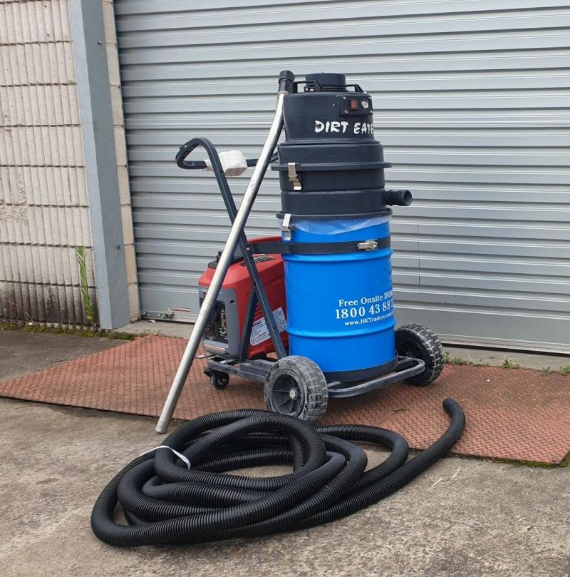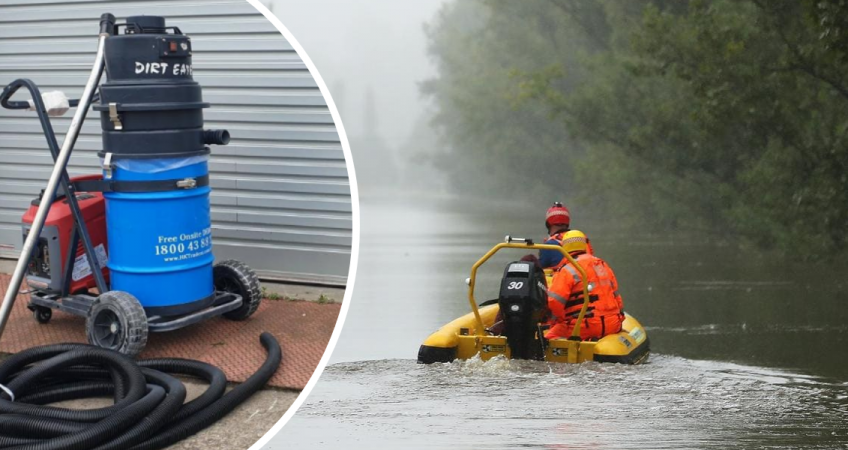How To Clean-up after the Western Sydney Flood?
Australia is battered by its worst flood of the last 60 years! With more than 2 million lives impacted with this flood, it has become a great concern as we see submerged intersections, marooned livestock and water as far as eyes can see! While many have been evacuated, the situation is soon to come under control and people will have to deal with the after flood clean-up.
Cleaning up after a flood is not just a tedious job, but it is also hazardous to human health as the waterlogged in the home brings a lot of germs and can also lead to injuries if not handled properly. To help you ensure that you can clean-up safely and effectively, we have created a clean-up checklist for you to follow. But, before you start with the clean-up, make sure you take photographs of the damaged properties for insurance purposes.

After flood clean-up checklist for safe and effective cleaning:
- Get rid of water.
- Dry it out
Use dehumidifiers and followers to relocate air around, preventing the growth of mold and mildew as well as mold. Keep dehumidifiers a minimum of 6 to 8 inches away from wall surfaces for the very best airflow. Clean and wash their filters once each week or so to help the follower operate effectively. Run your air conditioning frequently. Throw away any kind of wet boxes.
- Protective wear:
Before you start cleaning, make sure that you cover yourself properly to save yourself from harmful chemicals, germs, worms, wood particles, and other sharp objects. Make sure that you wear protective gear or at least full pants, goggles, boots, rubber gloves, N95 (P2) mask and a full-sleeved shirt/t-shirt.
- Cleaning tips:
To ensure that you kill the germs, clean the entire area with disinfectant and soap. Also, things that are water absorbents such as clothes, carpets, sheets, and other such material that has stayed wet for a long time can grow mold. It is essential that you throw these things that has mold. Also, open ventilation for air circulation and ensure that there is no electric equipment on while you still have standing water in your house or workspace.
- Scrub floor covering.
Vinyl ceramic tile, linoleum as well as other difficult surface areas can be scrubbed with a remedy of no more than one cup of chlorine bleach to one gallon of water. Throughout this procedure, use rubber handwear covers and also safety glasses and maintain the area ventilated.
- Use Industrial Wet/Dry Vacuums:
Flooded areas have many fine particle dust such as sand, sawdust, wood particles, wall paint, and other dust materials that contain Silica, Asbestos, Lead and others that are hazardous for health! Thus, dry sweeping can spread these particles more in the air and can worsen their spread of them. Thus, it is essential that for effective cleaning and collection of dust, you use Wet/Dry vacuum cleaner with a HEPA filter. Also, flooded areas also have slurry waste to clear and for that, Industrial Vacuums are the best! So, make sure that you use Industrial Vacuums with essential custom attachments and disposable bags for effective cleaning, collection and disposal of waste.
- Freeze your assets
If valuable documents or treasured documents have been dampened, you may try rapidly putting them in the freezer. This may cause mold growth and also wear and tear until you can take care of them later. Fix not to keep anything of value in the cellar and use cinder blocks to keep possessions off the floor. Plastic storage containers are far, much better than cardboard boxes for basement usage.
While the flood has made lives difficult, make sure that cleaning up after the flood doesn’t add up to your problems! Follow all the above-mentioned steps and if you have excessive flood damage, mold, or people with asthma and breathing problems, make sure you get professional help for flood clean-up. To get you a Vacuum Cleaner, call on 0426 291 402 or call on our toll-free number 1800 438 822. You can also email us on hello@industrialvacuums.net.au.

